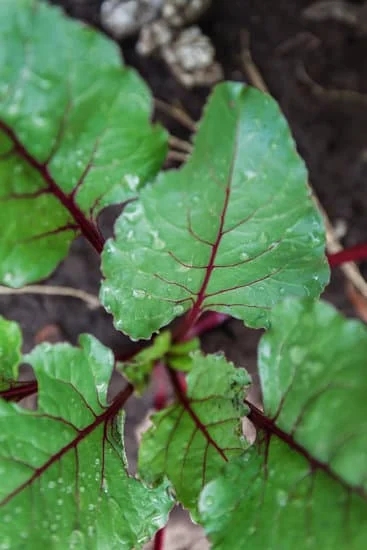Are you looking to elevate the look of your garden and create a defined space for your plants and flowers? A square gardening edge idea could be the perfect solution for you. Not only does it add structure and organization to your outdoor space, but it also provides a clean and polished finish that enhances the overall aesthetic of your garden.
When it comes to choosing the right materials for your square gardening edges, the options are endless. From classic wood and versatile plastic to elegant stone or sleek metal, there are various choices to suit every style and preference. The material you select will not only influence the look of your garden but also determine the durability and maintenance required for your square edges.
In addition to providing structure, square gardening edges offer endless design possibilities. Whether you prefer geometric patterns for a modern touch, raised beds for a layered effect, or curved edges for a soft and organic feel, there is no shortage of inspiration when it comes to creating unique square edge designs for your garden. Let’s explore further how incorporating square gardening edges can transform your outdoor space into a beautiful oasis.
Choosing the Right Materials
When it comes to creating square gardening edges, choosing the right materials is crucial in achieving the desired look and functionality. There are various options available, each with its own advantages and aesthetic appeal. The choice of material can also impact the durability and maintenance of your garden edges.
Wood
One popular choice for square gardening edges is wood. Wood offers a natural and rustic look that blends well with most garden styles. Popular wood choices include cedar, redwood, or pressure-treated lumber. However, keep in mind that wood may require more maintenance over time, such as sealing or staining to protect it from the elements.
Plastic
For a more affordable and low-maintenance option, plastic can be a great choice for square gardening edges. Plastic edging is easy to install and comes in a variety of colors and styles to suit your garden design. It is durable, resistant to rotting or warping, making it a practical choice for long-term use.
Stone or Metal
For a more durable and elegant look, stone or metal can be excellent choices for creating square gardening edges. Stone offers a natural and timeless appeal, while metal provides a sleek and modern aesthetic. Both options are sturdy and can withstand weather conditions well, making them ideal for long-lasting garden borders. While these materials may come with a higher price tag, they can add sophistication and structure to your outdoor space.
Design Inspiration
Square gardening edges not only serve a functional purpose in defining the boundaries of your garden beds but can also add a touch of style and structure to your outdoor space. When it comes to design inspiration, there are plenty of creative ideas to explore that can complement different garden styles and personal preferences. Here are some unique square gardening edge ideas to consider:
- Geometric Patterns: Embrace a modern and sleek look by incorporating geometric patterns into your square gardening edges. Whether you opt for precise right angles or intricate designs, geometric shapes can add a contemporary touch to your garden.
- Raised Beds: Create visual interest and depth in your garden by constructing raised beds with square gardening edges. This design not only helps define separate planting areas but also offers practical benefits like improved drainage and soil aeration.
- Curved Edges: For a softer and more organic feel, consider incorporating curved edges along with your square gardening borders. This combination creates a harmonious balance between structure and fluidity, adding an element of elegance to your outdoor space.
Experimenting with different square gardening edge ideas can help you achieve the desired aesthetic for your garden while also showcasing your creativity and personality. Whether you prefer a minimalist approach with clean lines or a more whimsical design with intricate detailing, there are endless possibilities to explore when it comes to enhancing the overall look of your outdoor oasis.
When implementing these design inspirations, remember to choose materials that not only complement the style of your garden but also offer durability and longevity. Additionally, proper maintenance is key to ensuring that your square gardening edges remain in top condition year-round. By combining aesthetics with functionality, you can create a visually stunning garden space that reflects your unique sense of style and enhances the beauty of nature around you.
DIY vs Professional Installation
When it comes to creating square gardening edges, one of the big decisions you’ll have to make is whether to tackle the project yourself or hire a professional landscaper. There are advantages and disadvantages to both options, so it’s important to consider what will work best for your specific situation.
If you have time, energy, and some DIY skills, creating square gardening edges yourself can be a rewarding experience. Not only will you save money on labor costs, but you’ll also have complete control over the design and execution of your garden edges. You can choose the materials that align with your vision, work at your own pace, and personalize every detail to suit your tastes.
On the other hand, hiring a professional landscaper can save you time and ensure that the square gardening edges are expertly installed with precision and professionalism. Landscapers have the tools, experience, and knowledge to create flawless edges that enhance the overall look of your garden. Additionally, they can offer valuable advice on design options, materials selection, and maintenance tips that you might not have considered on your own.
Ultimately, whether you decide to go with DIY or professional installation for your square gardening edges will depend on factors such as budget, time constraints, personal preference, and level of expertise. Whichever route you choose, creating well-defined square edges in your garden will undoubtedly elevate its aesthetic appeal and bring a sense of order and sophistication to your outdoor space.
Maintenance Tips
Maintaining square gardening edges is essential to ensure that they look neat and tidy while also preserving the overall aesthetic of your garden. One important tip is to regularly inspect the edges for any signs of wear and tear, such as loose materials or cracks. By addressing these issues promptly, you can prevent further damage and maintain the integrity of your square gardening edges.
Another key maintenance tip is to keep the edges clean and free from debris. This not only enhances the appearance of your garden but also prevents potential tripping hazards. Regularly sweeping or hosing down the square gardening edges can help remove dirt, leaves, and other unwanted materials that may accumulate over time.
Additionally, it is important to inspect the plants near the square gardening edges regularly. Trim any overhanging branches or foliage that may encroach on the edges, as this can affect the overall look of your garden. By keeping the plants well-maintained and trimmed, you can ensure that your square gardening edges remain prominent and well-defined.
| Maintenance Tips | Benefits |
|---|---|
| Regularly inspect for wear and tear | Prevent further damage |
| Keep edges clean and free from debris | Enhance appearance and prevent tripping hazards |
| Inspect plants near edges regularly | Maintain prominence and well-defined look |
Planting Suggestions
Flowers
When it comes to planting around square gardening edges, flowers are a popular choice due to their colorful blooms and ability to add charm to any garden. For square gardening edges, consider planting low-maintenance options like marigolds, petunias, or begonias that can thrive in the confined spaces of raised beds or geometric patterns. These flowers not only add a pop of color but also help soften the edges of the square structures, creating a more natural look.
Vegetables
For those looking to combine beauty with functionality, planting vegetables around square gardening edges is a great idea. Vegetables like lettuce, kale, tomatoes, or peppers can be grown within raised beds or directly along the straight lines of geometric patterns in square gardens. Not only do these vegetables provide an edible harvest for home gardeners but they also add a practical element to the aesthetic appeal of the garden.
Succulents and Herbs
To create visual interest while maximizing limited space around square gardening edges, consider adding succulents and herbs into the mix. Succulents like hens-and-chicks or sedum are excellent choices for their hardy nature and unique textures that can complement the clean lines of square garden structures.
Additionally, planting herbs such as basil, rosemary, or thyme along the edges can add fragrance and versatility to your garden design while maintaining a cohesive look throughout. Remember to choose plants that suit your local climate and sunlight conditions for optimal growth.
Creative Additions
When it comes to enhancing square gardening edges, there are endless creative possibilities that can elevate the overall look of your garden. One popular idea is to incorporate lighting along the edges to not only highlight the shape and structure but also create a stunning visual effect at night. LED lights can be easily installed along the edges to illuminate the pathway or outline of your garden beds, adding a touch of magic and charm to the space.
Another way to enhance square gardening edges is by using decorative rocks or colorful pebbles. These natural elements can add texture, color, and interest to the borders of your garden beds. By carefully selecting rocks in different shapes, sizes, and colors, you can create a visually appealing contrast against the greenery of your plants. Additionally, arranging colorful pebbles strategically along the edges can bring a playful and whimsical touch to your garden design.
Incorporating these creative additions into your square gardening edge idea can help you achieve a unique and personalized look for your outdoor space. Whether you choose to illuminate the edges with lighting or embellish them with decorative rocks and pebbles, these enhancements will not only elevate the aesthetics of your garden but also showcase your style and creativity as a gardener.
| Enhancement Idea | Description |
|---|---|
| Lighting | Incorporate LED lights along square gardening edges for an enchanting nighttime display. |
| Decorative Rocks | Add texture and color by using various rocks in different shapes and sizes along the edges. |
| Colorful Pebbles | Create a playful touch with colorful pebbles arranged strategically along the borders of garden beds. |
Final Thoughts
In conclusion, the square gardening edge idea presents an excellent opportunity to elevate the aesthetic appeal of your garden while also providing practical benefits. By having defined and neat edges in your garden beds, you not only create a sense of order and structure but also make it easier to maintain and care for your plants.
The clean lines and geometric shapes offered by square gardening edges can bring a modern touch to your outdoor space, enhancing its overall look and feel.
When considering the right materials for your square gardening edges, it’s essential to choose options that will withstand the elements and complement your garden style. Whether you opt for wood for a natural look, plastic for durability, stone for a rustic charm, or metal for a contemporary feel, each material choice can impact the visual appeal of your garden edges. Make sure to select materials that align with your vision and budget while also considering longevity and maintenance requirements.
Furthermore, incorporating creative additions like decorative rocks, colorful pebbles, or even lighting can take your square gardening edges to the next level. These elements not only add personality and charm to your garden but also create focal points that draw attention to different areas.
Remember that maintenance is key in preserving the beauty of your square gardening edges, so regular upkeep and care are essential to ensure they remain looking sharp and well-defined over time. Overall, implementing square gardening edges can be a game-changer in transforming your outdoor space into a visually appealing oasis that you can enjoy year-round.
Frequently Asked Questions
What Can I Use Instead of Garden Edging?
Instead of traditional garden edging materials like bricks, metal, or plastic, you can use natural options such as rocks, logs, or even plants themselves to create defined borders in your garden. These natural alternatives can add a more organic and seamless look to your landscaping.
How Do I Get Perfect Garden Edges?
To achieve perfect garden edges, you can start by using a spade or edging tool to create a clean line separating your lawn from flower beds or pathways. It is essential to regularly maintain these edges by trimming overgrown grass or weeds and keeping them neat and well-defined.
Using a physical barrier like metal or plastic edging can also help maintain the shape of your garden borders.
What Is the Best Garden Edging to Use?
The best garden edging material ultimately depends on your specific needs and preferences. Metal edging is durable and provides a modern, clean look but may be more expensive. Plastic edging is affordable and easy to install but may not be as sturdy in the long run.
Natural stone or brick edging adds a classic touch to your garden but requires more effort to install. Consider factors such as cost, aesthetics, durability, and ease of maintenance when choosing the best garden edging for your landscaping project.

Welcome to my gardening blog! I am passionate about plants and enjoy sharing my knowledge and experiences with others. In this blog, I will write about everything related to gardening, from tips on how to get started to updates on my own garden projects.





